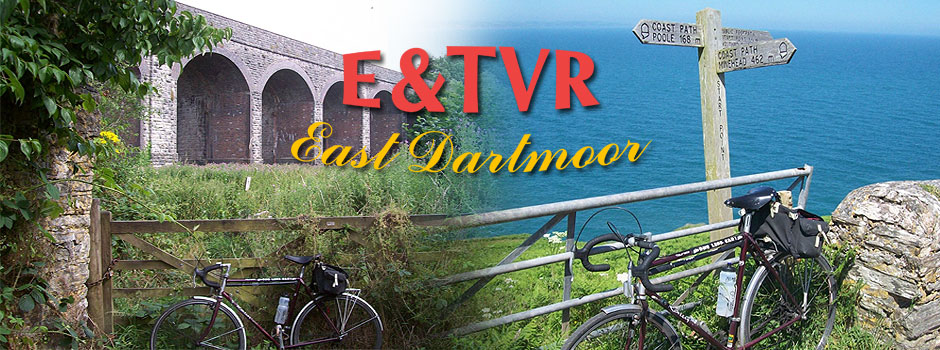Going through a drawer at Christow on a rainy day, the scout found these labels for traffics which the railway long ago ceased to carry.
The first four are labels for gumming to parcels or goods smalls. The remainder are wagon labels.
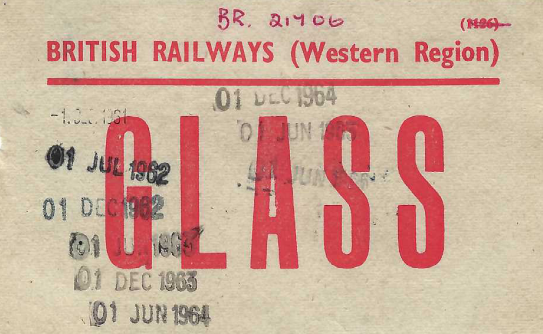
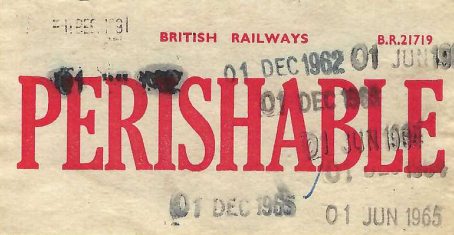
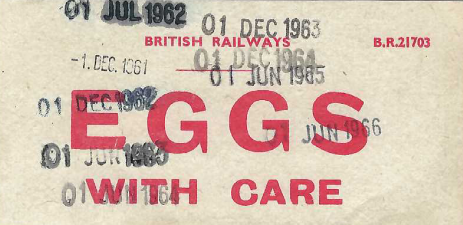
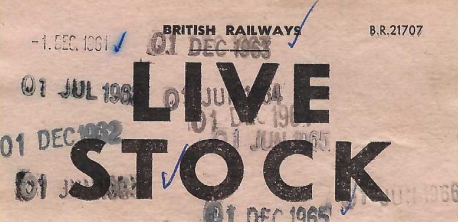
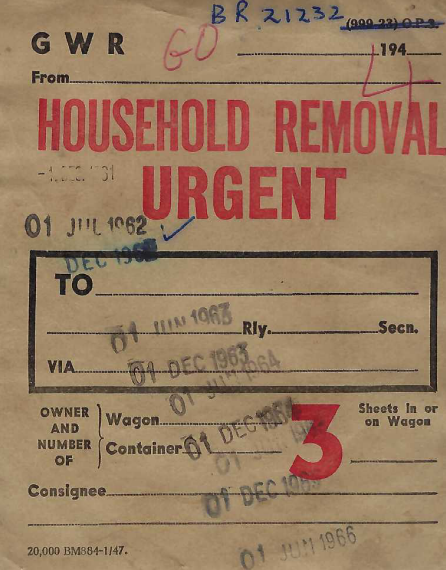
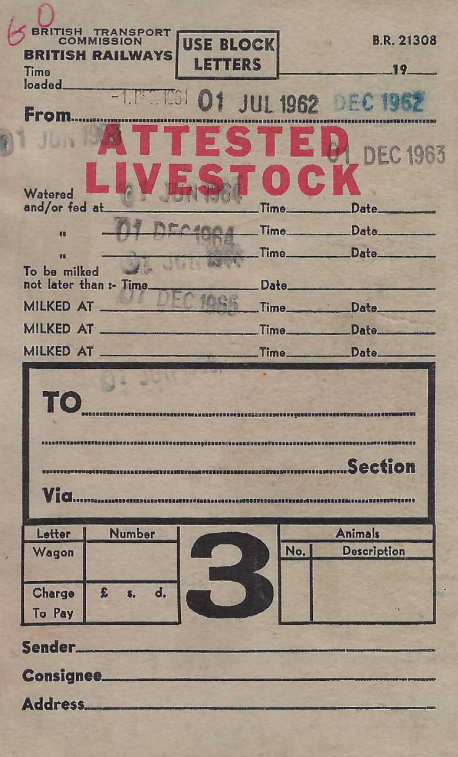
Who on the railway now could be trusted to do the milking?
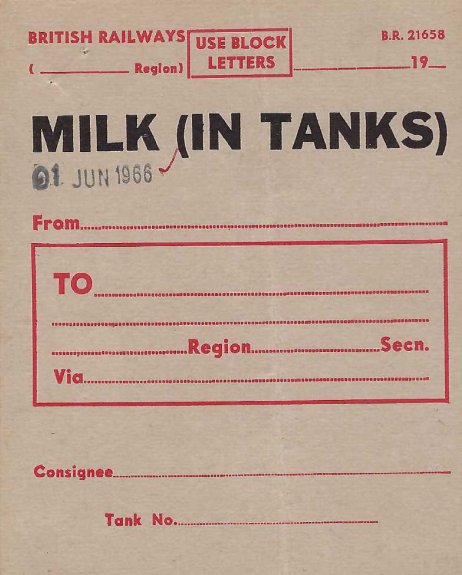
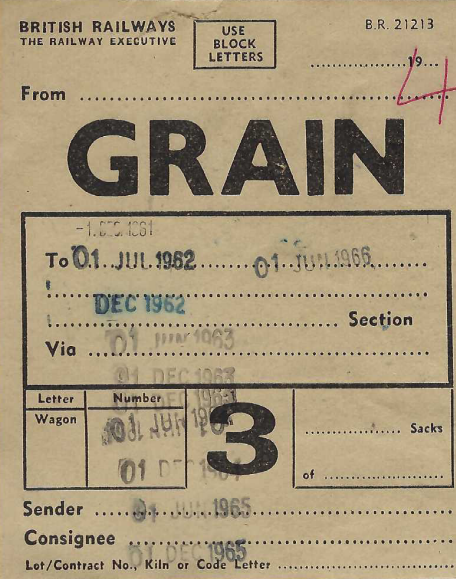
The reason that these labels are covered in date stamps is because they were kept as specimens by the clerk responsible for submitting the stationery requisition. Note that nothing was ordered after 1966.
Freight Train Loads
The large “3” on some of the wagon labels was part of the Great Western’s simplified method of reckoning up train loads based on equivalence, not tonnage.
Class 1 traffic weighed 16 tons; class 2, 13 tons; class 3, 10 tons; and empties, 6 tons. Never having used the system, and never having found much written about it, I am not sure how it worked. If the load for a particular class of engine over a route were say 15 of mineral (class 1), then it would be capable of taking a correspondingly greater number of the lighter traffics. Quite how this was done with a mix of classes and non-standard wagons, I do not know.
This rough and ready system contrasted with that adopted in the 1970s based on the principle that still for some reason is stuck in my mind, although I confess I am here quoting it from the “Working Manual for Rail Staff,” the contents of which governed the operation of a general purpose railway that has now ceased to exist, and instructed for example how to fold a sheet, tie a clove hitch and use chain shackles.
“Large heavily-loaded wagons when in motion generate little more wind-resistance and friction than small lightly-loaded ones. A locomotive is therefore capable of hauling a heavier train than the basic if its load is concentrated.”
Basic and maximum loads were issued for every loco and route. Between the two, a diminishing number of wagons could be taken, concentrating the load. The simplest example is a load of 250/280 tonnes. The lower could be taken in 15 wagons or more; the higher in 10 wagons or fewer. The return clay empties with 50 or so on would be limited by length, not weight, even if the loops had greater capacity. It was all highly theoretical and was long ago dropped in favour of plain tonnage, suited to the high capacity vehicles with roller bearings of today.
It all went out of the window, anyway, when the driver booked to work the last two trains of the day from Meldon with a thousand, would ask if he could bring them both at once so he could knock off early. The only rise, at North Tawton, could be easily topped, and the only other limitation was the length of Cowley Loop. Or was it Crediton?
A driver once insisted that he could ask for a heavier train than permitted. Actually, the rule is that a driver can insist upon taking less if he feels that his engine is not capable for some reason of hauling a full load, but never more. C.B.
